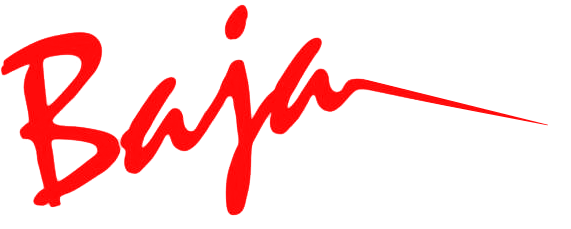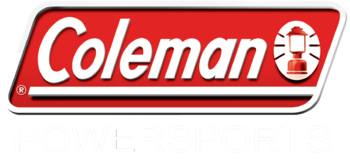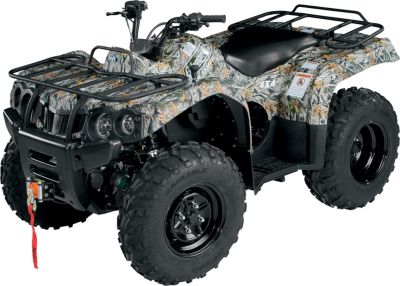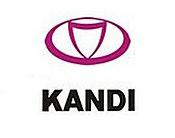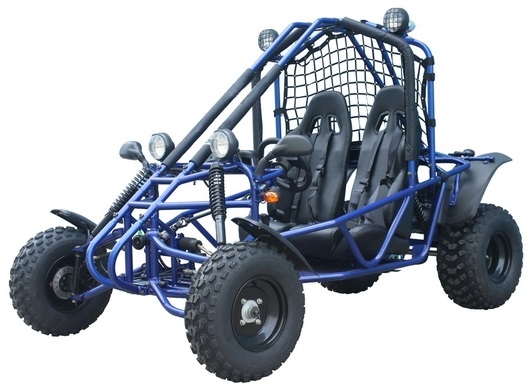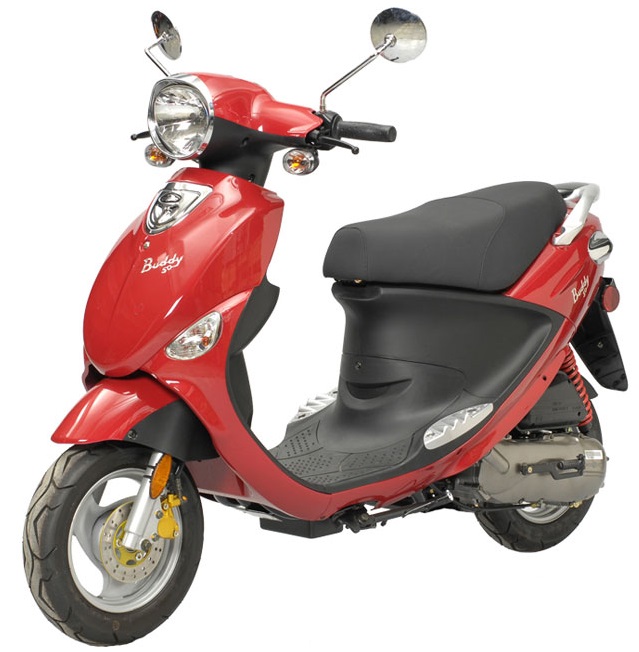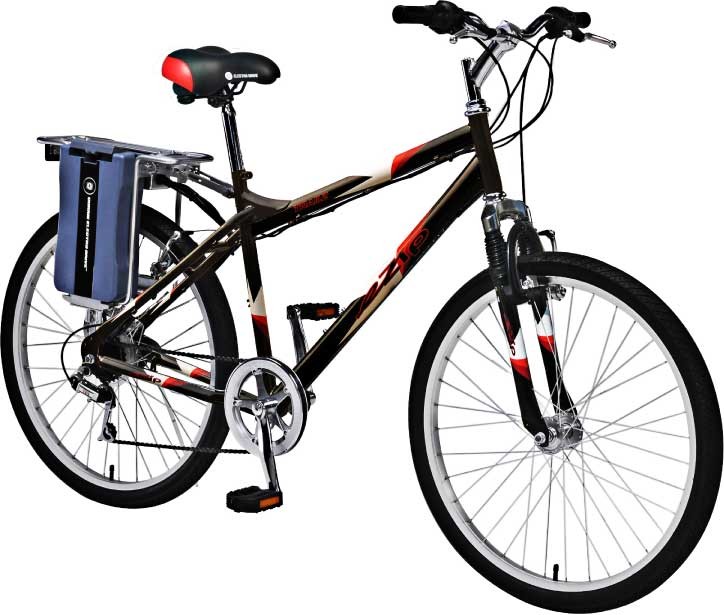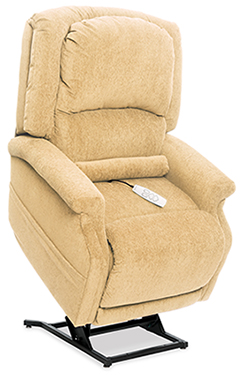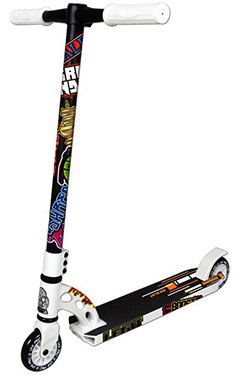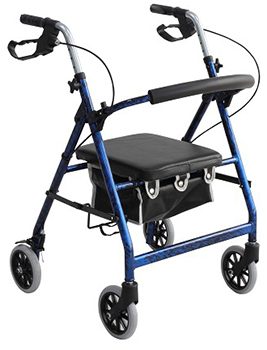- Accessories
- Armrests
- Batteries
- Battery Box Assemblies
- Battery Chargers
- Bearings
- Brakes
- Circuit Breakers
- Clearance and Discounted Items
- Controllers
- Drive Belts
- Footrests & Leg Rests
- Fuses & Fuse Holders
# | A | B | C | D | E | F | G | H | I | J | K | L | M | N | O | P | Q | R | S | T | U | V | W | X | Y | Z
2-Prong
A style of electrical connector that uses two male pins (or "prongs") mated to two female apertures. Relatively few are now used, but are sometimes still found on battery chargers.
2-Stroke Engine
A simple gasoline engine with two strokes (up and down movements) of the piston during one crankshaft revolution. These engines have a high power-to-weight ratio, relatively fewer moving parts, and are found on chainsaws, lawn mowers, go-karts, and many older motor scooter models.
3-Pin Shroud Female
Also called IEC C13. A common style of electric connector that uses three male pins (or "prongs") mated to three female apertures encased in a 6-sided plastic shroud. The 3-prong style is found on some contemporary battery chargers, and is the same type of connector that is commonly used for computer power cables.. Not to be confused with metal-shrouded XLR connectors.
3-Prong
A common style of electric connector that uses three male pins (or "prongs") mated to three female apertures. The 3-prong style is found on many contemporary battery chargers. Not to be confused with metal-shrouded XLR connectors.
4-Stroke Engine
A gasoline engine with four strokes (up and down movements) of the piston during one crankshaft revolution. Because they are less polluting than earlier 2-stroke engines, 4-stroke models such as the GY6 have become the most common small engine used on motor scooters in the 49cc to 150cc range.
700c
Metric designation for a 28" bicycle tire used in road and racing bikes.
Industrial standard for ball bearing tolerances. The five ABEC classes are (from greatest to least tolerances): 1, 3, 5, 7, & 9.
A square metal tube that allows an accessory such as an oxygen tank or crutch holder to be mounted on a mobility scooter or power chair. Similar in fuction to a trailer hitch, most accessory bars have a universal 1" diameter.
AGC Fuse
Automotive Glass Cartridge (AGC) fuses are used in may motorized scooters.
AGM
Short for "Absorbed Glass Mat". A type of battery where the liquid electrolyte is suspended in a fiberglass mat.
AKA
Shorthand for "Also Known As" often simply shown in lower-case aka.
Amp
Short for Ampere, a unit of measurement used to express the flow rate of electric charge. Not to be confused with Amp-Hour.
Amp-Hour
The amp hour rating of a battery indicates the time length of a usable charge, but not necessarily its strength or volume.
Aramid
A tough woven synthetic fabric that is suspended in rubber and used for drive or pulley belts. Often called by the brand name Kevlar.
ATO Fuse
The familiar push-in/pull-out fuse with twin tabs. Standard ATO size blade fuses are nominally 3/16" x 3/4" and are color coded to indicate amps.
Axle Key
A rectangular or half-moon shaped piece of metal, square in cross section, that locks a wheel hub in place and prevents it from slipping about on a cylindrical shaft or axle. The axle key fits into a keyway slot. Half-moon keys are also called Woodruff keys.
Also called a Polo Saddle; a style of long (12" to 18") and narrow bicycle seat made popular by the 1960s era Schwinn Sting Ray. The banana seat required a 3-point support known as a sissy bar.
Bar End
Short for "handlebar end." Usually referring to a mirror that is inserted into the open end of a handlebar tube.
Bead Width
The distance between the inner parts of the rim flange. If the rim is too wide or too narrow, the tire may not fit properly. This is especially critical when mounting solid or foam-filled tires.
Bell Housing
A protective external metal case or shroud that shields the moving parts of a clutch assembly.
Boot
Flexible rubber sleeve used to protect delicate moving parts on mobility scooter tillers and power chair joysticks. Also known as a gaiter.
Bottle Cage
A metal or plastic water bottle holder that is secured to the frame of a bicycle.
The amount of electrical energy that can be stored by a battery. Battery capacity is usually designated by Amp-Hours (Ah).
Cassette
The rear wheel sprocket assembly on a multi-speed bicycle.
Caster
A wheel mounted to a fork that is allowed to rotate freely and roll in any direction. These are commonly the non-drive wheels on electric mobility power chairs and wheelchairs.
Caster Board
A type of recreational foot propelled scooter that uses swivelling caster wheels.
CDI
Short for "Capacitor Discharge Ignition." A type of electronic ignition used on many small engines to supply current to the spark plug. The CDI is typically enclosed in a small case and is referred to as a CDI module.
Chain Breaker
A tool used to push a pin in or out of a chain's link. A chain breaker does not truly "break" the chain, but allows links to be disassembled.
Coaxial Cable
A style of electrical cable using an inner conductor sheathed by an insulating layer, surrounded by an additional woven metal conductor and insulation.
Coaxial Connector
A style of electrical connector used to connect a coaxial cable into a receptacle. Coaxial connectors are identified by the smooth metal plug with a small orifice in the center.
Cruiser
A traditional but still popular bicycle style using coaster brakes and single speed gears. Often referred to as a beach cruiser.
CVT
Shorthand for "Continuous Variable Transmission". A simple type of automatic transmission used on many motor scooters and go-karts.
An SLA battery designed to be regularly deeply discharged using most of its capacity.
Derailleur
A cable operated device used on bicycles to move the drive chain over the gear sprockets.
Direct Connect Charger
A battery charger that uses alligator clips to connect directly to a battery's positive and negative terminals.
DIY
Shorthand for "Do It Yourself", as in a simple repair that most non-mechanics could easily accomplish.
Dry Charged
A type of battery which is shipped with the electrolytic acid separate from the battery case. The consumer inserts the non-removeable acid pack thus activating the battery.
Shorthand for "Elevating Leg Rest". Adjustable limb supports found on many wheelchairs and electric power chairs.
A flexible metal strip mounted over the rear wheel of kick scooters. Foot pressure on the strip produces the friction to halt a turning wheel.
Foam-Filled
A type of tire for mobility scooters and power chairs that has been made solid with a hardening foam.
Fork
Part of a steering mechanism that holds the front wheel or caster in suspension in order for the wheels to freely rotate, yet easily pivot with the steering.
Freewheel (Bicycles)
A ratchet-like chain sprocket assembly that disengages the rear wheel, allowing the wheel to rotate faster than the pedals.
Freewheel (Mobility)
A lever device used to disengage the brake assembly from the drive wheels on mobility scooters and electric power chairs.
A type of battery where the electrolytes are suspended in a non-spillable gelatin-like semi-solid mass. Gel batteries are most commonly used on motorcycles but may be found on snowmobiles, mobility scooters, and power chairs.
GMA Fuse
Also known as a Bussmann fuse. A very small (3/16" x 3/4") glass fuse used in battery chargers.
GY6
A Honda designed, single-cylinder, 4-stroke gasoline engine used on most contemporary motor scooters, ATVs, and go-karts. Usually coupled with a Continuous Variable Transmission (CVT).
The hand-held "remote control" unit used to activate the positioning motors or heat & massage function on lift chairs and electric hospital beds. Unlike television remotes, the pendant is wired directly to the motors by way of a cable.
Harness
A ready-made set of wires, along with their associated connectors or other parts.
Headset
An assembly of ball bearings that allows a handlebar or tiller to rotate.
Hitch Class
A code used to designate the tubular diameter size and weight capacity (WC) of trailer hitches. The four standard hitch classes are Class I (1-1/4" - 2,000 lb. WC), Class II (1-1/4" - 3,500 lb. WC), Class III (2" - 6,000 lb. WC), & Class IV (2" - 10,000 lb. WC).
Honda Clone
Generic gasoline powered small engines derived from former Honda designs. Also called Chonda engines.
Hub Motor
A type of radial electric motor that is enclosed within a wheel's hub. Usually found on electric bicycles and mopeds.
Hydropack
A portable bladder worn inside of a backpack to hold water. Usually equipped with a drinking tube.
A set of standards published by the International Electrotechnical Commission (IEC). For example, IEC 60320 (or IEC-320) specified non-locking appliance and interconnection couplers for connecting power supply cords to electrical appliances up to 250 volts.
Ignition Coil
A device used on gasoline engines to transform low voltage from the battery into the high voltage required for the spark plug to ignite the fuel/air mixture.
Input Voltage
The amount of electric current that is fed into a motor, battery charger, or other device for proper operation.
A device directly below the joystick boot that sends the operator's hand movements to the controller.
A single rectangular slot that is symmetrically milled into both the axle and the hub to receive the axle key. The keyway slot for a Woodruff key is asymmetrical, with a shallow section mated to a deeper section.
A tire that uses deep, wide grooves (or "sipes") for enhanced traction on loose surfaces. A Knobby tire is the opposite of a Slick tire.
Shorthand for "Light-Emitting Diode". LED lights are used in small consumer electronics such as battery chargers and joystick displays.
Load Test
A load test is a type of test performed on batteries to check the overall health of a battery under a load.
Lithium-Ion (Li-ion)
A type of rechargeable battery commonly used in portable consumer electronics. Their lightweight, rapid recharge, and charge longevity have made them a popular alternative to traditional acid-based batteries.
Lithium-Iron (LiFePO4)
A subcategory of Lithium-ion (Li-ion) batteries. More chemically stable than standard Lithium-ion batteries, Lithium-iron phosphate (LiFePO4) is less prone to overheating and is considered as safer.
Load & Speed Rating
Sometimes called the LI-SR Code, the load & speed rating are shown as two digits and a letter. The numerals represent the maximum weight carrying capacity and the letter stands for the tire's maximum safe speed. Note that the load rates are codes and do state the true numerical capacity. For example, a tire with a rating of 51P would have a load rating of 430 lbs. and a maximum safe speed rating of 93 MPH.
Also called a stator, a static coil generator that turns the radial motion of a magnet into alternating current (AC).
Manual Choke
A hand-controlled butterfly valve that regulates the amount of gasoline entering a carburetor.
Master Link
A quick-release piece of chain that allows easy chain removal. A master link can also be used to join the two ends of an open loop of chain.
Mini 3-Prong
A style of electric connector that uses three male pins (or "prongs") mated to three female apertures. Smaller and not compatible with standard 3-prong connectors, the mini 3-prong style is often found on battery chargers made for use with Lithium-ion batteries.
Modified 3-Pin
A style of electric connector identified by the female plug that uses a center ground connector pin that is sideways relative to the other two pins. The Modified 3-pin system is commonly used on electric bicycles and their associated battery chargers.
Monkey Bar
A style of high-rise bicycle handlebar that mimics the chopper-style motorcycle bars. The tallest models were also known as "ape hanger" handlebars.
Motor Brush
A stationary conductor of electrical current inside of an electric motor. Always used in pairs for positive and negative poles, a motor brush is composed of compressed graphite and copper wire. Some electric motors use four brushes.
MTB
Shorthand for Mountain Bike. A popular bicycle style identified by a heavier frame, knobby tires, and a straight handlebar.
Short for "No Rev Limiter". A type of CDI module that does not restrict the engine's maximum rotational speed. Used on some high performance motor scooters.
Noodle
A small metal pipe used as a cable guide on bicycle brakes, dirt bike, go-kart & ATV brakes & throttles. A noodle is bent at a 30 to 90 degree angle.
Shorthand for Original Equipment Manufacturer. Refers to factory-installed standard parts.
Off-Board Charger
Off-board chargers are the most common types of chargers consisting of a "brick" (or a transformer) and 2 cables (one going to the power outlet and one going into the scooter or other electric vehicle. This type of charger can be removed from the scooter and stored, unlike an on-board charger.
Ohm
A unit of electrical resistance.
An on-board charger is a type of charger that stays on the scooter at all times. Scooters equipped with these chargers simply need a power cord to plug into the wall and do not require a "brick" (or a transformer).
Open Loop
Chain that has not been pinned at a specific link count. Open loop chain is usually sold by the linear foot or meter.
Output Voltage
The amount of electric current that exits an alternator, battery charger, electric motor, or transformer.
A ratchet-like part of a recoil pull start that when engaged allows the wheel or ratchet to only turn in one direction.
Pin (Chain)
Chain pins are the small rods that attach the inner set of plates to the outer set. Pin may also be used as a synonym for link.
Pin (Electronics)
Male tubular metal posts or flat rectangular tabs within wire connectors that mate to female apertures on the corresponding opposite side.
Pitch (Chain)
The distance between pins in a chain.
Pneumatic
Air-filled, as in traditional tires with inner tubes.
Polarity
The directional flow of electrons in a circuit. In a Direct Current (DC) electrical circuit such as with a battery , one pole (or "post") is always positive, and one is always negative. In an Alternate Current (AC) circuit the electrons reverse or alternate between poles.
Potentiometer (Pot)
A 3-terminal adjustable resistor used in electronics to vary the intensity of a current. Typical applications include throttle and speed controls (also referred to as throttle pots and speed pots) on mobility scooters.
Primer Bulb
A small rubber or pliable plastic button on small engines that is pressed to inject a small amount of fuel into a carburetor. Larger gasoline engines may use an inline squeeze bulb for the same purpose.
Also called a Voltage Regulator, the rectifier prevents the capacitor from discharging prior to ignition (turning the key). Upon ignition, the rectifier stops charging the capacitor, allowing the capacitor to transfer the 400-600 Volt charge to the ignition coil.
Riser Block
An stationary exercise or trainer bicycle accessory that holds the front wheel secure while the rear wheel to be pedaled.
Rollator
A mobility walking aid similar to a traditional walker, but equipped with wheels and handbrakes. Some models have a fold-down seat.
Roller Weight
Part of a Continuous Variable Transmission (CVT) system. The roller weights push the rollers outward through centrifugal force and begin changing the CVT's gear ratio.
An alternate term for a bicycle seat.
Sealed Bearing
A type of ball bearing that uses a black rubber disc to insulate the balls from contamination and to retain the lubrication. Sealed bearings have the suffix RS or 2RS on the end of their codes.
Semi-Pneumatic
A type of pneumatic tire using an inner tube that has had a hardening foam injected through the valve stem.
Shielded Bearing
A type of ball bearing that uses a crimped-in, non-removeable metal disc to protect the balls from dirt and debris. Shielded bearings have the suffix ZZ on the end of their codes.
Shotgun Connector
A style of shrouded electrical connector where a pair of pins or prongs are held side by side in a horizontal figure 8. Viewed from the front, this connector looks similar to the bore of a traditional double-barreled shotgun.
Shroud (Connector)
A metal or plastic shield surrounding an electrical connector. Shrouds both protect the connecting pins from damage, and ensure that the connector can only be inserted one way.
Shroud (Panel)
A plastic or fiberglass body panel used on a mobility scooter or power chair.
Sintered Brake Pad
A common type of disc brake pads using small copper flecks or shavings in the composition to provide increased longevity.
Sipe
The grooves in a tire's tread. Sipes provide traction and act as gutters to force water out from under the spinning tire.
Sissy Bar
A tubular rear bracket made to support the rear of a banana-style bicycle seat. The fashion was inspired by the chopper-style motorcycles of the 1960s.
Skewer
A device for holding bicycle wheels to the fork. Many skewers use a quick release cam lever, while other models are secured by tightening a hex bolt.
SLA
Shorthand for "Sealed Lead Acid". A type of battery where the liquid battery acid is hermetically sealed inside of the battery case and cannot be topped-off.
Slick (Tire)
A style of tire that may be totally treadless or have relatively few sipes or grooves. A Slick tire is the opposite of a Knobby tire.
Slider
A wedge-shaped or sliding weight used in CVT variators.
Speed Pot
A speed pot is a potentiometer used to control the speed of a mobility scooter.
Spline
Multiple milled grooves or channels around the circumference of an axle that mate with similar channels machined onto the wheel hub. Similar in function to the traditional milled key/keyway used on axles, but without the need for the additional key.
Stator
Also called a magneto, a static coil generator that turns the radial motion of a magnet into alternating current (AC).
Stem Bolt
A threaded fastener is used to secure a tiller or handlebar stem to the wheel fork.
A throttle pot is a potentiometer on a scooter used to control the throttle.
Tire Liner
A thin padded strip of cork or rubber that cushions an inner tube from the spoke heads inside of a bicycle rim.
Tiller
The tiller is the technical term for the handlebars and the handlebar stem on a mobility scooter.
Torque Converter
A torque converter takes the place of a clutch in an automatic transmission. The torque converter disconnects the transmission from the engine while the scooter is stopped, which allows the engine to continue running. Used primarily when referring to ATVs, go-karts, and other off-road vehicles.
Torsion Spring
A coil spring that provides the torque for chain tensioners. Torsion springs are also used on electric throttle potentiometers to provide the physical resistance on the throttle or "wig-wag" lever.
Transaxle
A space-saving mechanical drive component of many mobility scooters that contains the gearbox (transmission) and two axle shafts. The electric motor and brake is held atop the transaxle, making a compact drive assembly.
Tread Code
An alphanumeric code used by many tire manufacturers to designate their tire tread styles. Other brands, (such as Michelin and others), simply use the series name to distinguish their different tread designs.
Trickle Charger
A type of battery charger designed to slowly add an electric charge with a much reduced risk of overcharging the battery. Most trickle chargers can be left ON for several hours or overnight.
A mark or symbol used when a product meets the Underwriters' Laboratory's (UL) safety standards.
Urethane
A type of strong plastic material used to make tires, handlebar grips, and other items. Often called Polyurethane or PU.
Part of a Continuous Variable Transmission (CVT) consisting of a pair of expanding pulleys linked with a belt. As the pulleys revolve, centrifugal weights increase or decrease the engine's gear ratio, expanding or contracting the pulley sheaves.
Volt/Voltage
Also called electromotive force, a measure of the potential difference in charge between two points in an electrical field.
The amount of electric power required to run an electric motor, appliance, or device.
Weatherproof
Weatherproof is a term used to describe an item that will protect against weather such as wind, cold temperatures, snow, and rain. Although some weatherproof items can be water repellent, that does not mean they are waterproof.
Waterproof
Waterproof is a term used to describe an item that is water impermeable. This means that water can't get through and that the item is hydrophobic.
Wig-Wag Lever
A thumb operated bar attached to a throttle potentiometer that controls the forward and backward movement of a mobility scooter.
Woodruff Key
A semi-circular or half-moon shaped axle key that fits into a milled keyway slot on a tapered shaft, locking a wheel hub in place and preventing it from slipping on a shaft or axle.
A type of electrical connector originally found on audio equipment, and now used with a majority of scooter battery chargers. XLR connectors have an enclosing metal shroud and three male pins.
XLR-4
A type of electrical connector found on some battery chargers. XLR-4 connectors have an enclosing metal shroud and four male pins.












